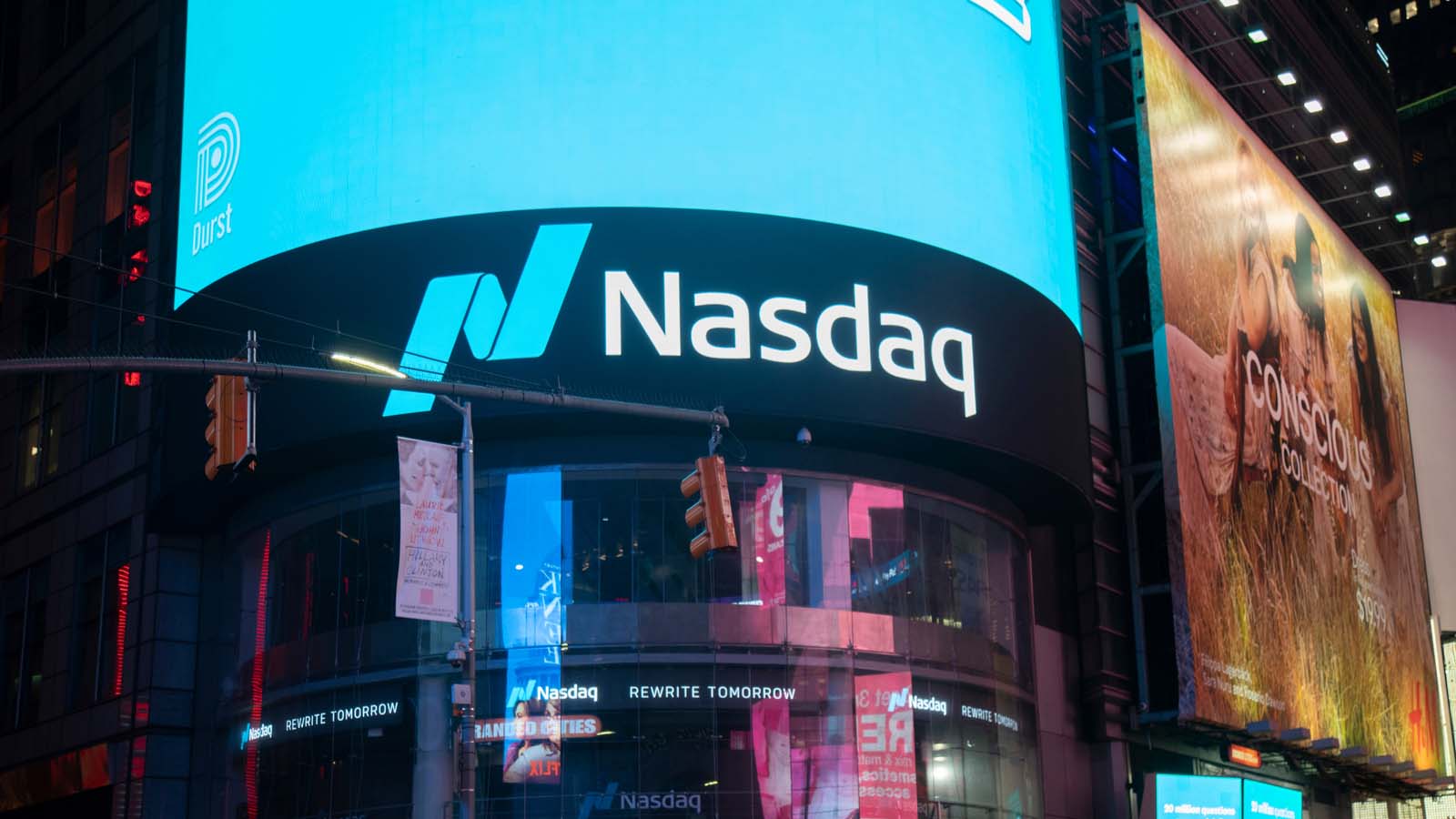The Nasdaq 100 Index has more than doubled from its pandemic lows in the past year. It includes the top 100 non-financial companies listed on the Nasdaq exchange with the largest market capitalization. With such a strong performance, Nasdaq 100 stocks can be a powerful addition to a portfolio.
A large number of investors are concerned about the duration and size of the impressive rally we have seen since the pandemic hit our shores. After such a major run-up in prices, the logic goes, a double-digit correction could be looming around the corner. Sky-high valuations have some analysts making comparisons to the tech bubble in the late 1990s.
While September is usually a challenging time for investors, especially in light of such a big rally this year, many companies are still available at reasonable prices given their high growth potential. Additionally, the recent earnings season led to sell-offs in several Nasdaq 100 stocks, giving investors an opportunity to grab shares at a discount. This has created attractive entry points into stocks ahead of the familiar year-end rally.
Nasdaq 100 stocks typically offer investors exposure to transformative themes and secular trends, especially in technology. They include a broad spectrum of businesses like cloud technology, online advertising, communications, digital payments and healthcare. As some of these innovative trends may be here to stay, investors need to identify these names early on in their growth cycle.
Against that backdrop, here are seven Nasdaq 100 stocks to buy before September comes to a close:
- Broadcom (NASDAQ:AVGO)
- Invesco QQQ Trust (NASDAQ:QQQ)
- Paccar (NASDAQ:PCAR)
- Ross Stores (NASDAQ:ROST)
- Starbucks (NASDAQ:SBUX)
- Synopsys (NASDAQ:SNPS)
- Walgreens Boots Alliance (NASDAQ:WBA)
Nasdaq 100 Stocks: Broadcom (AVGO)

52 week Range: $343.48 – $510.70
Dividend Yield: 2.82%
San Jose, California-based Broadcom offers a diverse range of semiconductor and infrastructure software solutions. It produces a wide range of chips for the data center, storage, networking, software and industrial markets. The company released fiscal third-quarter results in early September.
Revenue of $6.78 billion was up 16% year-over-year (YOY). Non-GAAP net income surged 28% YOY to $3.12 billion, or $6.96 per share. The results were better than most investors had anticipated.
Free cash flow also increased 11% to $3.43 billion. Cash and equivalents ended the quarter at $11.11 billion.
On the results, CEO Hock Tan remarked, “Broadcom delivered record revenues in the third quarter reflecting our product and technology leadership across multiple secular growth markets in cloud, 5G infrastructure, broadband, and wireless … We are projecting the momentum to continue in the fourth quarter.”
Notably, the company generated 74% of its revenue from its semiconductor solutions business. Since it outsources production to third-party foundries, Broadcom is also considered a fabless semiconductor company.
For a tech name, AVGO stock currently offers a generous dividend yield of 2.8%. Additionally, management expects revenue to increase by 14% YOY in the fourth quarter. It’s quite exceptional to find a combination of healthy dividend income and growth potential in the tech world.
AVGO stock is trading slightly above $500 and is up 14% year-to-date (YTD). The shares trade at 16.7 times forward earnings and eight times current sales. A potential decline toward $490 or below would make the stock even more attractive.
Invesco QQQ Trust (QQQ)

52-week range: $260.11 – $382.78
Dividend Yield: 0.49%
Expense Ratio: 0.2% per year
The Invesco QQQ Trust is an exchange-traded fund (ETF) that tracks the Nasdaq 100 Index. Based on its average daily volume at the end of June, QQQ is the second-most-traded ETF in the U.S.
As a result, it is also one of the most liquid ETFs available to investors. The fund offers exposure to several growing and transformative themes as well as vital trends in technology and other sectors.
The information technology sector accounts for 48.9% of the fund, followed by communication services at 19.43% and the consumer discretionary sector at 16.78%.
The top ten holdings in the fund account for more than half of its $194 billion value. The fund’s top three holdings in the roster include Apple (NASDAQ:AAPL), Microsoft (NASDAQ:MSFT) and Amazon (NASDAQ:AMZN). These three heavyweights make up 29% of the fund.
The fund has surged 19% YTD, which technically indicates a bull market. Trailing price-to-earnings (P/E) and price-to-book (P/B) ratios of 33.12x and 8.96x imply somewhat overstretched valuation levels. While a good value now, more cautious investors might want to wait for a pullback of about 5% to 7% before buying for the long run.
Nasdaq 100 Stocks: Paccar (PCAR)

52 week range: $79.05 – $103.19
Dividend Yield: 1.61%
A leader in its sector, Bellevue, Washington-based Paccar manufactures premium medium- and heavy-duty trucks. Its products sell in North America and Australia under its Kenworth and Peterbilt brands. DAF trucks are also made by one of Paccar’s subsidiaries and sold in Europe and South America.
Paccar announced Q2 results in late July. Net sales increased 91% YOY to $5.84 billion. The company reported a net income of $493 million, or $1.41 per diluted share, compared to $148 million, or 43 cents per diluted share, in the prior-year quarter. Cash and equivalents ended the quarter at $3.1 billion.
Following the announcement, CEO Preston Feight remarked, “PACCAR Parts achieved record quarterly sales and profits due to strong industry truck utilization, an increased number of Kenworth, Peterbilt and DAF trucks with the PACCAR Powertrain, and the growth of PACCAR Parts’ e-commerce platform.”
Earlier in 2021, the company announced a strategic partnership with Aurora to develop autonomous trucks. The Kenworth T680 and Peterbilt 579 trucks already utilize the Aurora Driver technology.
Fortune Business Insights released a report stating that the global autonomous trucks market was worth $1.74 million in 2019. Looking forward, that value is expected to reach $2.1 million by 2027 at a compound annual growth rate (CAGR) of 12.6%.
PCAR stock hovers around $82 territory, down 5% YTD. It dropped more than 18% from highs seen in February. It has a cheap valuation, as it trades at 11.9 times forward earnings and 1.3 times current sales. The pullback offers an appealing entry point for long-term investors.
Ross Stores (ROST)

52 week range: $84.68 – $134.22
Dividend Yield: 1.01%
Dublin, California-based Ross Stores is an off-price apparel and home decor retailer. It operates nearly 1,900 stores under the Ross Dress for Less and Dd’s Discounts banners. Ross offers various name-brand products with the aim to undercut the regular prices of conventional retailers by 20% to 70%.
The retailer announced Q2 results in mid-August, beating sales and earnings guidance. Revenue surged 79% YOY to $4.8 billion, also up 21% compared to Q2 2019. Net earnings came in at $494 million compared to $22 million in the prior-year quarter. EPS surged to $1.39, beating its guidance by more than 50%. Cash and equivalents ended the quarter at $5.6 billion.
On the results, CEO Barbara Rentler said, “During the second quarter, we repurchased 1.4 million shares of common stock for an aggregate price of $176 million. As previously announced, we expect to buy back a total of $650 million in common stock during fiscal 2021.”
Despite the strong earnings report, Ross Stores offered a downbeat guidance for the third quarter. The spread of the delta variant may cause consumers to cut back store visits.
Additionally, the positive momentum derived from pandemic-related stimulus programs is expected to fade in the coming months. Management also expects margin pressure due to rising freight costs over the next few quarters.
ROST stock trades for slightly less than $115. It is down 7% so far this year. The shares trade at 25 times forward earnings and 2.3 times current sales. The stock is already a worthwhile buy, but hesitant readers would find better value around $110 or less.
Nasdaq 100 Stocks: Starbucks (SBUX)

52 week range: $81.75 – $126.32
Dividend Yield: 1.57%
As one of the most widely-recognized restaurant brands worldwide, Starbucks needs little introduction. The company is a roaster and retailer of specialty coffee, operating nearly 33,300 stores across 83 countries as of June 2021.
Starbucks released fiscal Q3 2021 results in late July. Revenue surged 78% YOY to a record of $7.5 billion. Net earnings came in at $1.15 billion compared to a net loss of $678 million a year ago.
The company reported an adjusted EPS of $1.01 compared to an adjusted loss of 46 cents per share in the prior year period. Cash and equivalents ended the quarter at $4.75 billion.
On the results, CEO Kevin Johnson cited, “Starbucks delivered record performance in the third quarter, demonstrating powerful momentum beyond recovery … we are raising our full-year financial outlook and are confident in our ability to continue to execute our ‘Growth at Scale’ agenda to unlock the full potential of the Starbucks brand.”
Starbucks is continuing to shift toward contactless purchasing for customers. It is also restructuring store portfolios to encourage digital ordering and pickup in specific locations, opening smaller shops where needed. Drive-thru and mobile orders constituted 47% and 26% of transactions in the third quarter, respectively.
Analysts expect coffee sales to increase in the coming years. Global coffee sales currently total more than $400 billion with an annual growth forecast of more than 8.2% through 2025.
SBUX stock is a valuable opportunity for buy-and-hold investors given its brand strength and revenue growth. The stock trades around $113, up almost 6% YTD and 29% over the past year. Forward P/E and current P/S ratios stand at 32.05x and 5.19x, respectively.
Synopsys (SNPS)
52 week range: $193.55 – $340.66
Synopsys is one of the most important names in electronic design automation (EDA) software. According to ScienceDirect, these tools are “used to design and verify integrated circuits (ICs), printed circuit boards (PCBs) and electronic systems.”
Synopsys reported solid fiscal Q3 2021 results in mid-August. Revenue increased nearly 10% YOY to $1.06 billion. Non-GAAP net income came in at $285 million, or $1.81 per share, compared to $272 million, or $1.74 per share, last year. Cash and equivalents ended the quarter at $1.39 billion.
Co-CEO Aart de Geus remarked, “Synopsys delivered excellent results in the fiscal third quarter, including record revenue and non-GAAP earnings, and we are substantially raising our fiscal 2021 targets. On a trailing-12-month basis, we surpassed the major milestone we set a few years ago: $4 billion in revenue and 30% non-GAAP operating margin.”
SNPS stock hit an all-time high of $340.66 in early September. It currently trades for $335, up 14% over the past month and 29% this year. The shares trade at 42 times forward earnings and 12.8 times current sales, respectively. Share are appealing now, and short-term profit-taking could push the stock to an even better entry point of $330.
Nasdaq 100 Stocks: Walgreens Boots Alliance (WBA)

52 week range: $33.36 – $57.05
Dividend Yield: 3.81%
Prominent retail pharmacy chain Walgreens Boots Alliance has more than 21,000 stores in 11 countries. Nearly 80% of the U.S. population resides within five miles of a Walgreens.
The company announced fiscal Q3 2021 metrics in early July. Revenue increased by 12% YOY to $34 billion. Net earnings came in at $1.2 billion, or $1.38 per diluted share, compared with a net loss of $1.7 billion, or a loss of $1.95 per diluted share, in the prior-year quarter. Free cash flow stood at $1.4 billion, up $788 million YOY. Cash and equivalents ended the quarter at $1.3 billion.
CEO Rosalind Brewer said, “We are accelerating our investments to advance our operational excellence, including technology innovations that support mass personalization, pharmacy of the future and the next phase of growth in tech-enabled healthcare.”
Walgreens Boots Alliance has forged a partnership with VillageMD to open around 700 full-service clinics with on-site physicians within its stores. Management aims to increase repeat visits and attract customers to the company’s higher-margin pharmacy business.
WBA stock is trading just shy of $50 and up 23% YTD. But it has declined 8.6% in the past three months, offering investors an opportunity to buy it at a discount.
The stock also supports a generous 3.8% dividend yield. Walgreens is an attractive stock for income investors, with a forward P/E ratio of less than 10 and a current P/S of 0.29.
On the date of publication, Tezcan Gecgil did not have (either directly or indirectly) any positions in the securities mentioned in this article. The opinions expressed in this article are those of the writer, subject to the InvestorPlace.com Publishing Guidelines.
Tezcan Gecgil has worked in investment management for over two decades in the U.S. and U.K. In addition to formal higher education in the field, she has also completed all 3 levels of the Chartered Market Technician (CMT) examination. Her passion is for options trading based on technical analysis of fundamentally strong companies. She especially enjoys setting up weekly covered calls for income generation.
